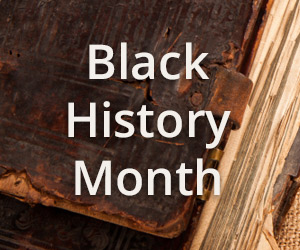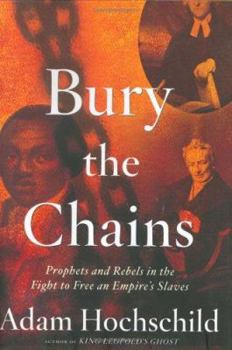Bury the Chains: Prophets and Rebels in the Fight to Free an Empire's Slaves
Select Format
Select Condition 
Book Overview
Adam Hochschild's Bury the Chains is the taut, gripping account of one of the most brilliantly organized social justice campaigns in history--the fight to free the slaves of the British Empire.Winner... This description may be from another edition of this product.
Format:Hardcover
Language:English
ISBN:0618104690
ISBN13:9780618104697
Release Date:January 2005
Publisher:Houghton Mifflin
Length:468 Pages
Weight:1.75 lbs.
Dimensions:1.5" x 6.4" x 9.3"
Customer Reviews
5 ratings
Inspired writing
Published by Thriftbooks.com User , 19 years ago
Was a bit worried that this book would be too academic and dry, but was rewarded with a fantastic historical tour of one of the key turning points in human progress. The determination of the key abolitionists to overcome the maddening spin of the status quo powerbrokers of the day - is a key plot line substantiated by the author. In fact it seems that that were pioneers of many of the core advocacy and and polical tactics still used today. Read this fairly hefty book in less than 12 hours; it was so absorbing.
Brilliant and inspiring book
Published by Thriftbooks.com User , 19 years ago
This is one of the most inspiring books I have ever read. Hochschild tells an important story very powerfully and with great feeling and humanity. And he has some facinating heroes and villains, because this is a tale of human beings at our very best and at our very worst. Hochschild shows us the developing moral insight of abolitionist leaders like Thomas Clarkson, Granville Sharpe and the Quakers, who somehow understood something early on that was unclear to many Britons: that slavery was evil. He also limns the amazing life of Olaudah Equiano, who knew slavery from personal experience, and shows how a small group was able to move millions of people its cause--and even get hundreds of thousands to give up sugar in their tea. Also--and very importantly--Hochschild shows how eventual emancipation was not a gift from European and American humanitarians, but at least partially the result of a long struggle in the slave colonies by the slaves themselves, generations of whom proved willing, again and again, to die for their freedom. It is interesting that the slave revolts in the West Indies were often a setback in public opinion for the British abolitionists: apparently it was easier to accept the idea that slavery was evil than it was to get to the idea that slaves have an inherent right of armed resistance. Meticulous and detailed research and a passionate yet thoughtful writing style are great strengths of this book. Hard to put down, and hard to stop thinking about even months after finishing it.
How 12 Men Organized the Defeat of Slavery in England
Published by Thriftbooks.com User , 19 years ago
Early in 2005, Houghton Mifflin published Adam Hochschild's latest book, Bury the Chains, in which the author documents the amazing accomplishments of a committee of twelve men who decided in 1787 to stop English slave trading. They not only ended slave trading, in 1838 they also abolished human bondage in the British Empire. The title of the book refers to the symbolic burying of chains and whips in Jamaica in 1838, after slavery was eradicated. Hochschild believes the British abolitionists he documented in his book can provide inspiration for people today. He wrote, "Their passion and optimism are still contagious and still relevant to our times, when, in so many parts of the world, equal rights for all men and women seem far distant." After reading Bury the Chains, I agree with the author, and I suspect you will also. The struggle described in the book reminds me of the biblical story of David and Goliath. "David" represents the twelve men dedicated to stopping slavery during a period when various forms of it were so extensive. In 1787 only one fourth of the world's population had even limited freedom. "Goliath" represents the leaders of the English government who benefited financially from the slave trade and did not want to give it up. Instead of slingshot and stones, "David" used petition drives, mass propaganda, and lobbying to end British involvement in slave trafficking. This book illustrates how a few dedicated individuals can make a dramatic difference in the world. I found it difficult to lay the book down because I kept wondering how so few men could accomplish so much. The author explained why abolitionists were more effective in England than in other parts of the world. The following are a few of the characteristics of life in England in the last few years of the 18th century that contributed to their effectiveness: · Reading and debating were very popular in England, so it was possible to get people involved in learning about and discussing the topic of slave trading. · The well-maintained roads and excellent postal system made it easy to send or take messages quickly to any place in England and facilitated activities such as petition drives. · The Quakers throughout England dedicated themselves to ending slavery and contributed money and a countrywide network of committed men and women to the cause. The author described some of the ways the twelve members contributed to the committee. Nine of the twelve men were Quakers who believed that all people, regardless of race, had a divine spark inside them and were equal in the eyes of God. At the time most people thought blacks inferior to whites. The Quakers beliefs led them to establish Britain's first antislavery society. The nine Quakers had little success with their antislavery efforts until three Anglican evangelists joined them and they established the Society for the Abolition of the Slave Trade. The three new members contributed unique talents. Granville Sharp,
Great book on latest in long series of abolition activists
Published by Thriftbooks.com User , 19 years ago
In reading this excellent book, it is important to not read more into it than its narrow subject matter, for example, to not conclude that anti-slavery views and activism did not begin anywhere until the late 18th century, and the small number British abolitionists whose activities Hochschild so well narrates. Many were opposing slavery long before, e.g., (a) Samuel Sewall, Selling of Joseph: A Memorial (Boston: Green and Allen, 1700); (b) Ralph Sandiford, A Brief Examination of the Practice of the Times (Philadelphia: Franklin and Meredith, 1729); (c) Benjamin Lay, All Slave-Keepers That Keep The Innocent in Bondage, Apostates (Philadelphia: Ben Franklin, 1737). Note also abolitionist writings such as by (a) Abolitionist Rev. Theodore D. Weld, The Bible Against Slavery (New York: American Anti-Slavery Society, 1837), tracing condemnations of slavery back to the Bible, the Law of Moses, and Ancient Israel; (b) Abolitionist Rev. George B. Cheever, God Against Slavery and the Freedom and Duty of the Pulpit To Rebuke It, As a Sin against God (Cincinnati: American Reform Tract and Book Society, 1857), tracing condemnations of slavery back to the Bible, the Law of Moses, Ancient Israel, the prophet Jeremiah, and Ancient Judah; (c) Abolitionist Rev. John G. Fee, An Anti-Slavery Manual, or, The Wrongs of American Slavery Exposed By the Light of the Bible and of Facts, with A Remedy for the Evil, 2d ed. (New York: William Harned, 1851), showing slavery condemned back at least to the time of the Biblical Patriarch Joseph, indeed, in principle (the "original grant" concept) back to the time of the Garden of Eden; (d) Alvan Stewart, Legal Argument For the Deliverance of 4,000 Persons from Bondage (New York: Finch & Weed, 1845), tracing anti-slavery activism back to the violent divine intervention in direct opposition to slavery via the Exodus, with ten plagues, fugitive slaves fleeing Egypt, reparations of silver, gold and clothing at the "plundering" level, mass deaths of slavers, including the first-born and the drowning of Egypt's army; (e) Abolitionist Edward Coit Rogers, Letters on Slavery Addressed to the Pro-slavery Men of America, Showing Its Illegality in All Ages and Nations: Its Destructive War Upon Society and Government, Morals and Religion (Boston: Bela Marsh, 1855), showed slavery condemnation among Ancient Greece and Rome, the early Christians, Medieval European societies, and so on. So it is vital to understanding, to not conclude that anti-slavery views and activism did not begin anywhere until the persons Hochschild cites began their late in history activism. They were in fact following numerous precedents going back thousands of years.
The moment of truth
Published by Thriftbooks.com User , 19 years ago
The curse of slavery had haunted civilization for thousands of years, even the moderate gains of the medieval period seemingly eroded by the rise of the modern economy in the exploitation of Caribbean sugar capitalism, and yet within a generation the rise of abolitionism triggered the final end of the institution. This account of the birth of the abolitionist advocacy, in mysterious synchrony with the American French Revolutions,tells the tale of twelve men who created one of the first effective grassroots movements in history. It is a tale with many episodes, among them many failures, but an outstanding moral: don't give up. Well done, from the author of King Leopolds'Ghost. See also, Though the Heavens May Fall, from Stephen Wise.
Bury the Chains Mentions in Our Blog

Black History – Not Just a Month
Published by Richard Wells • February 08, 2016
Black History Month rolls around every February to bring very few new surprises about a black history that seems to encompass the Civil Rights Movement and little else. There’s so much more to the story – let’s have a look.





